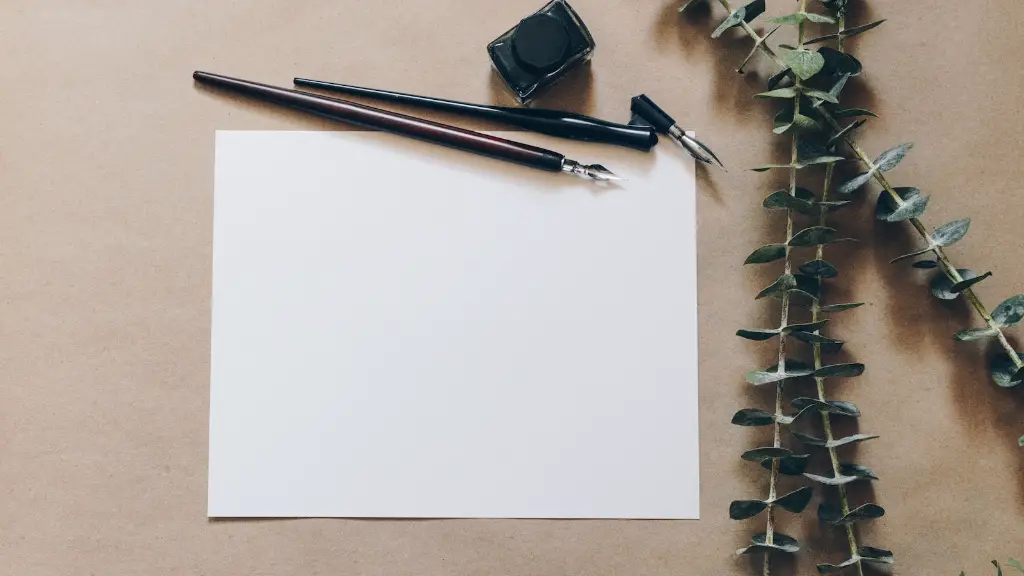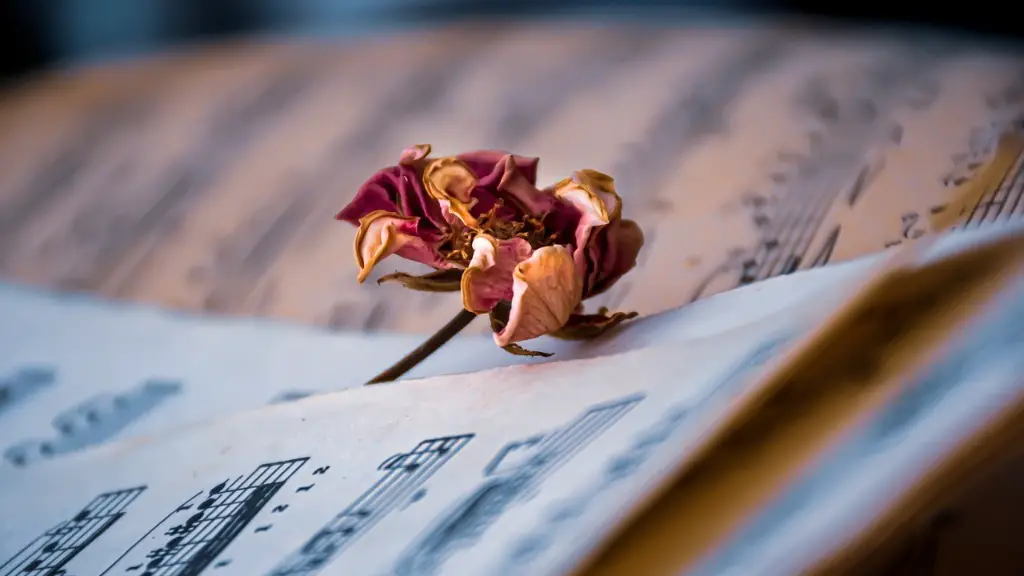Understanding Poetry
Poetry is a type of literature and art form that uses language to express intense emotion and communicate ideas. It is crafted from words and symbols and contains symbols, sounds, and structure to convey feeling and emotion. To successfully identify poetry, one must first understand the elements of poetry and how they come together to form an expression and convey meaning.
At its core, poetry is composed of words and symbols that form a rhythmic structure to communicate and express emotion. This structure is often used to create a song-like feeling, in which sound and meter are used to convey ideas, feelings, and emotions. Poetry relies heavily on language to communicate and it often uses metaphors, as well as vivid imagery, to bring to life a feeling or idea.
Poetry is commonly understood as a unique form of literature, with its own methods of communication. There are many different types of poetry, including ballads, sonnets, and free verse. All of these share certain features like sound, rhythm, and imagery. These features make it possible to identify a piece of poetry simply by reading it.
When reading a piece of poetry, it is important to take note of certain features such as literary devices, rhyme schemes, and meter. These features are often used to craft a particular structure that heightens the emotional effect of a poem. Additionally, the types of words and metaphors used in a piece of poetry can also help a reader gain a greater sense of what the poem is trying to express.
In addition to recognizing the unique attributes of a poem, readers can identify poetry by getting to know the poets themselves. Poets use their own unique styles and perspectives to express their thoughts and feelings. By researching different types of poets, readers can gain an understanding of the style and voice of certain forms of poetry.
Another way to identify poetry is to look for recognizable symbols and images in the words of a poem. Poetry often contains symbols and references to natural and historical events. Furthermore, poetry can contain references to classical mythologies, religion, and folklores. By recognizing these symbols and images, readers can gain a greater insight into the poem and the emotions contained within it.
Ultimately, poetry is a form of communication that is meant to evoke emotion and provoke thought. It uses words, symbols, and structure to create powerful imagery and convey a powerful message. To identify poetry, one must learn to recognize the unique features of different forms of poetry, as well as the distinctive styles of individual poets.
Finding Poetry
Once a person has gained an understanding of the elements of poetry and how to identify a poem, the next step is to find poems and read them. Although there are many different places to find poetry, one of the most accessible and reliable sources is the library. Libraries often have large collections of poetry books, anthologies, and periodicals that are filled with poems by different authors. Additionally, libraries often host reading and writing groups and even poetry slams. Contacting a library is a great way to find out about events and resources centered around poetry.
Another source of poetry is the internet. There are many websites dedicated to providing access to poems by different authors. Additionally, many poets have their own websites where they post excerpts from their works or full pieces. Reading forums and discussion boards can also be a great way to find new poets and gain a greater understanding of the genre.
Finally, there are often poetry readings happening in cities and towns around the world. These events often serve as a great opportunity to meet poets and explore their work in person. Additionally, by attending poetry readings, one can gain an understanding of the range of styles and approaches that poets take in their works.
Locating and Appreciating Poetry
It can be difficult to find a source of poetry to read and appreciate, but with a little bit of effort and research, it is possible to locate and understand poetry. Once one has a grasp on the elements of poetry and how to identify a poem, it is much easier to find, read, and appreciate the works of different poets. Additionally, by attending events and reading forums, one can gain a greater understanding of the scope of poetry, meet other like-minded people, and share one’s appreciation for the genre.
Learning about Poetry Styles and Forms
To identify poetry, one must first gain a greater understanding of the different types of poetry and the poets who use them. Each type of poetry comes with its own set of rules and conventions, as well as its own unique set of symbols, images, and motifs. By researching different types of poetry, one can gain an understanding of how each type is used to express emotion and communicate ideas.
For example, sonnets are traditionally written in iambic pentameter, a metrical pattern in which each line contains 10 syllables with an alternating unstressed-stressed pattern. They often use Petrarchan conventions, such as an octave for the first eight lines and a sestet for the last six, as well as familiar rhyme schemes. By understanding these conventions, it becomes much easier to recognize a sonnet and gain a greater appreciation for the poet’s use of language.
Similarly, ballads often tell stories in the form of a poem, often featuring characters and a narrative arc. Ballads often use a distinctively informal and conversational tone and rely heavily on imagery and emotion. By understanding the narrative conventions of a ballad, it is much easier to identify one and appreciate the poet’s use of language.
Reading and researching these types of poetry can help one gain a greater understanding of the ways that poets communicate and express their thoughts and feelings. Additionally, it can provide greater insight into the emotions and ideas contained within a piece of poetry and lead to a more intense appreciation of the genre.
Analyzing and Interpreting Poetry
Identifying a piece of poetry is only the first step in appreciating the genre. Once one has identified a poem, it is important to analyze and interpret it. By understanding the symbols and motifs used, as well as the structure and style, readers can gain a greater insight into the poem’s message and the emotions it is trying to convey.
Additionally, one should consider the context in which the poem was written. Was the poet responding to a particular event? What was the poet’s frame of mind when they wrote the poem? These questions can often help understand the meaning and message of a poem.
Finally, readers should consider how the poem made them feel, as well as how their own life experiences and perspectives might have influenced their interpretation of the poem. Readers should also consider how different interpretations by other readers might have been influenced by their own perspectives and life experiences.
The Power of Poetry
Poetry has the power to transport readers to new places and make them feel intense emotions. By understanding the elements of a poem and recognizing the work of different poets, one can gain a better appreciation for the genre and the emotions it is trying to convey. Additionally, by researching and attending literary events, readers can gain access to challenging new works and meet like-minded people who share their passion for the written word.
Furthermore, poetry has the power to move people in profound ways. It can help readers dig deeper into their own thoughts and feelings and gain new perspectives on the world around them. Through the power of poetry, readers can come to better understand themselves and the world they live in.
Writing Poetry
Writing poetry can be a great way to express one’s thoughts and feelings. Writing poetry provides a way to express intense emotions and communicate ideas in a unique and powerful way. Additionally, the process of writing poetry can be a great way to explore one’s thoughts, come up with new ideas, and gain a greater understanding of oneself.
When writing poetry, it is important to focus on the ideas and emotions that one wishes to express. Additionally, one should read and analyze poetry to gain a better understanding of the conventions and symbols used by different poets, as well as the structure and flow of poetry. These elements can then be applied to one’s own poetry to create more powerful and evocative works.
Finally, it is important to practice writing regularly. Writing poetry is an ongoing process and the more one writes, the better one’s skills become. Additionally, by attending events and reading forums, one can find inspiration, make connections, and gain feedback from other poets.
Exploring the World of Poetry
At its core, poetry is a powerful tool for expressing emotion and communicating ideas. By understanding how to identify poetry and exploring different types of poetry, readers can gain a greater appreciation of the genre and the poets who use it. Additionally, by writing poetry and attending events, poets can explore new ideas and share a passion for the genre.
Ultimately, exploring the world of poetry can be a great way to connect with other like-minded people, gain a deeper understanding of emotions and ideas, and cultivate a love for language and the written word. By understanding poetry and recognizing its power, readers can gain a greater appreciation for the genre and the emotions it evokes.





